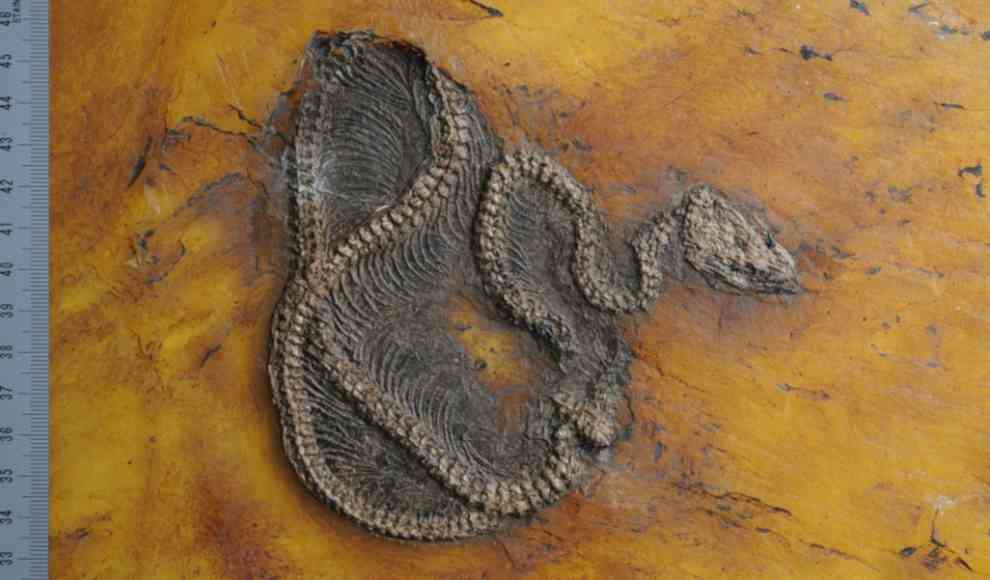A 47.5 million-year-old fossil found near Darmstadt, Germany, has revealed that pythons originated on the northern continent of Laurasia. Today, anacondas, pythons, and boas are found almost exclusively in tropical and other warm regions. However, excavations have shown that giant snakes also existed in what is now Germany 15 to 20 million years ago. Scientists have long wondered where these giant snakes actually came from. Based on genetic comparisons, the prevailing theory was that the ancestors of pythons and boas separated about 40 million years ago and then evolved separately. However, a recent discovery by scientists at the Senckenberg Research Institute and Natural History Museum in Frankfurt has cast doubt on this theory.
In early 2020, the team found a fossil of a 47 million-year-old boa in the Messel Pit near Darmstadt, which is the oldest giant snake fossil ever discovered. The species was named Messelopython freyi. According to the researchers, “the discovery proves that python snakes were already present in Europe during the Paleogene.” If the theory that pythons originated on the southern continent of Gondwana was correct, such a fossil should only be found in America today. Therefore, it seems that pythons originated on the northern continent of Laurasia, which later became the continent of Europe. Additionally, the snake discovery refutes the theory that boas and pythons evolved separately in different regions.
The discovery of the Messelopython freyi is unexpected given the current distribution of these snakes. It remains unclear why the two snake families separated after living together 47 million years ago. The theory that the two snake families compete and therefore cannot share the same habitat must be reconsidered. The possibility of a spatial separation due to plate tectonics is also unlikely due to their close coexistence in the past. This discovery sheds new light on the evolution of giant snakes and their origins.
Krister Smith: ?Das hat einen bedeutenden Einfluss auf unsere Sicht der evolutionären Geografie dieser Tiergruppe. Denn ohne diesen Fund wäre die Stammeslinie der Pythonschlangen fest in Gondwana verankert. Messelopython freyi jedoch verlegt die Wurzeln der Pythons nach Laurasia und widerlegt die Gondwana-Theorie.?










